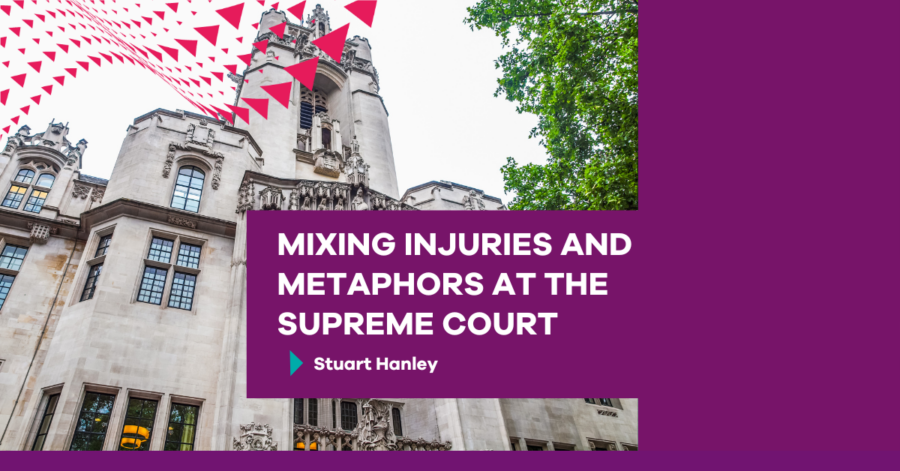Mixing Injuries and Metaphors at The Supreme Court


*Since publication, the Supreme Court has announced it will hand down their judgment on the Rabot and Briggs mixed injury appeals on Tuesday 26 March.
We are pleased to note that having sifted through the complex legal arguments and colourful language and metaphors involving ‘apples and nutmegs’ the Supreme Court has taken a balanced and pragmatic approach which should bring clarity, certainty, consistency, and fairness to the valuation of mixed injuries. This eagerly awaited decision should both allow stayed cases to quickly progress and speed up settlement of new claims, which will ultimately benefit both consumers and insurers and in turn hopefully help deliver the streamlined process the government whiplash reforms promised but have so far only delivered in part. At Minster Law, we remain committed to a proactive and collaborative approach to the handling of these claims and this decision should enhance that process and help reduce unnecessary friction.
—
On the eagerly anticipated date of February 20th, the Supreme Court convened to deliberate on the mixed-injury appeal cases of Rabot v Hasam and Briggs v Laditan. This highly anticipated hearing offered a glimpse into the complexities surrounding the valuation of mixed injuries, accompanied by a dose of colourful language and creative metaphors.
The proceedings unfolded with a fascinating array of technical legal arguments, featuring discussions likening injuries to the overlapping sections of a Venn diagram and even comparing them to ‘apples and nutmegs’ – a novel metaphor indeed!
Amidst the legal jargon and imaginative comparisons, the Court’s commitment to delivering a timely judgment shone through, suggesting that a resolution may arrive sooner than initially anticipated – something that I am sure all parties will agree can only be a good thing!
At the heart of the matter lies the challenge of assessing compensation for individuals who sustain both whiplash injuries, subject to tariff awards under the Civil Liability Act (CLA), and additional injuries falling outside the scope of the CLA and existing tariff structures. The Court of Appeal’s approach, as upheld in the Birkenhead County Court, involves valuing each injury separately and then adjusting for any overlap to avoid overcompensation.
While the legal intricacies may seem daunting, the implications of the Supreme Court’s decision are significant. Not only will it provide much-needed clarity for handling mixed injury claims, but it will also pave the way for the resolution of numerous pending cases and enable insurers to set claim reserves more accurately.
Looking ahead, the outcome of the Supreme Court’s deliberation holds immense importance for all stakeholders in the legal sector. From claimants seeking fair compensation to insurers and defendant law firms striving for greater prudence on claims costs – the decision will carry important implications.
As we await the Court’s verdict, speculation abounds regarding the potential outcomes. Will the Court adopt a conservative approach favouring claimants, a more stringent stance benefiting insurers, or a balanced middle ground. While the Court of Appeal leaned towards the centre ground, debates will likely ensue as to the optimal approach and a potential extension to the current tariff matrix?
While opinions may differ, one thing remains certain: the Supreme Court’s decision will determine the future landscape of mixed injury claims and leave a lasting impact on our legal system.
While the road to clarity is often fraught with delays and rarely without uncertainties, the Supreme Court’s imminent decision offers a beacon of hope. With the promise of clarity on the horizon, we eagerly anticipate a resolution that will bring certainty, consistency, and fairness to the valuation of mixed injuries. Let’s await the Court’s judgment with bated breath, for it holds the key to resolving a fundamental issue and charting the course for the future of our legal framework.